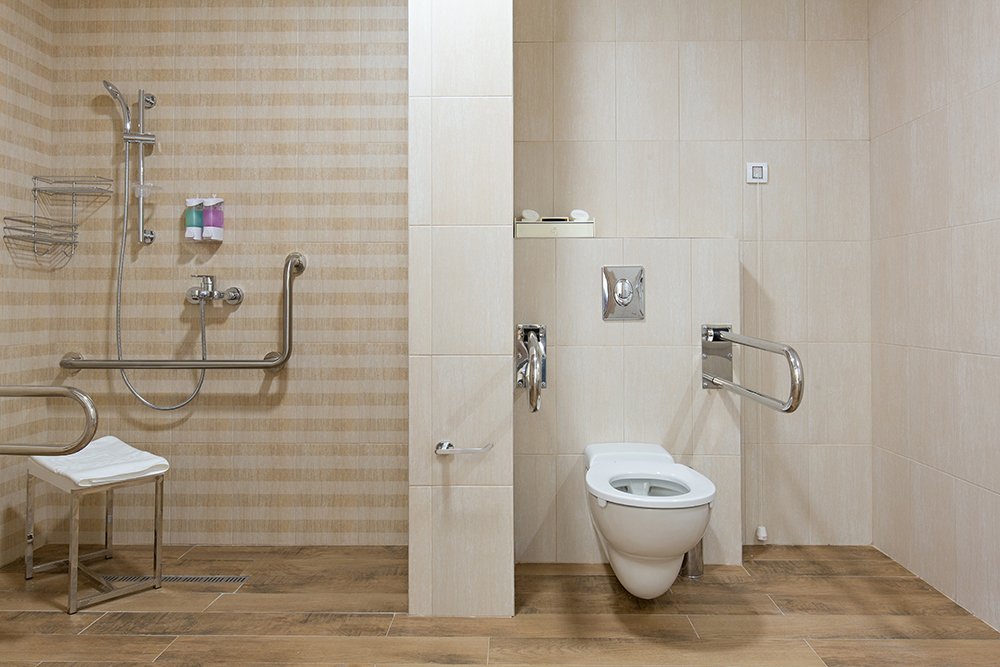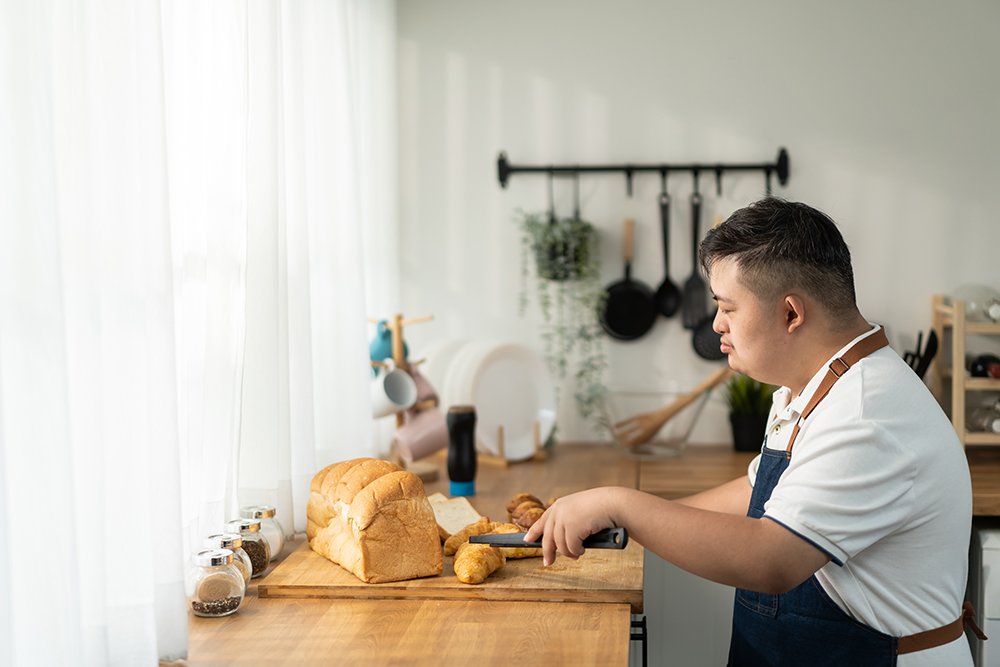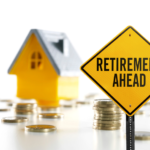We’re often asked:
Is it worth investing in NDIS property?
Yes, if you play your cards right.
New and seasoned investors can benefit from steady income and long-term lease security, while filling the growing demand for disability rentals in Australia.
However, don’t rush into this.
There are risks, like with any property investment.
If you’re looking for a get-rich-quick scheme, this isn’t for you.
But if you make research-based decisions, expect to grow your profits consistently over time, while enjoying the safety net of government support for approved tenants.
Let’s talk about NDIS property investment pros and cons…
Housing crisis for people with disabilities
There’s a critical shortage of suitable houses for people with disabilities across Australia.
The situation is so bad that many younger people with high support needs are forced to live in nursing or group homes – while others live in old, dangerous houses that aren’t suitable for their condition.
“After experiencing a brain injury, and going through rehabilitation, at the age of 53 years and – having lived an independent life raising two children and working as a chef – I had no other option but to enter a nursing home. The nursing home felt like a prison to me.” RACGP
Thankfully, the National Disability Insurance Scheme (NDIS) funds speciality disability accommodation (SDA) for thousands of participants, which helps to tackle the crisis.
Demand for NDIS housing is growing too!
Around 36,700 people are expected to need disability housing by 2042, with an average growth rate of 2.4 per cent each year.
We’ll talk more about NDIS property investment pros and cons soon, but first, let’s explain what specialist disability housing is.

What is SDA housing?
Specialist disability accommodation helps people with physical, intellectual, sensory or cognitive conditions to live more independently in safe and comfortable houses, available for rent or purchase.
SDA funding is available for eligible participants under the NDIS.
This article focuses on the rental market only.
Payment:
Australian federal, state and territory governments together pay $700 million a year to cover the rental yield and property maintenance of 28,000 participants, according to data from 2022.
Money for building and maintenance costs goes directly to the SDA landlord. This funding allocation depends on the housing type, location and accessibility level required.
Most NDIS participants also pay their SDA landlord a reasonable rent contribution, usually capped at 25 per cent of their disability support pension (plus all the Commonwealth Rent Assistance they receive).
Note: investors only start receiving SDA payments after securing a tenant approved for SDA funding under the NDIS.
Building features:
Every NDIS property must meet strict SDA certification standards and be accessible to tenants with disabilities.
Common features may include:
- Wheelchair access
- Level entryways
- Easy-to-use doorways and features
- Good visibility from each room
- Adequate space
- Secure windows and doors
- Advanced assistive technology
- Reachable power outlets
- Suitable soundproofing
- Laminated glass
Building types and disability categories:
Specialist disability accommodation is available for houses, apartments, duplexes, villas, townhouses and group homes.
A typical SDA property contains three to four bedrooms for up to three tenants (and a carer who’s covered by NDIS payments).
There are four different design categories, based on the level of support required.
- Improved Liveability: suitable for people with intellectual, sensory or cognitive impairments
- Fully accessible: suitable for wheelchair users and others with significant mobility challenges
- Robust: suitable for people with behaviour that may endanger themselves or others
- High physical support: suitable for tenants who require a lot of physical and personal support

Is NDIS housing a good investment? (benefits)
Yes!
At a glance:
- High net yield of five to eight per cent
- Reliable source of income from long-term lease agreements
- Government support lowers the risk of missing out on rent after tenant secured
- High demand for NDIS housing in many locations
- Contribute to society by filling the need for disability housing
Earn higher-than-average rental yields, while making life more comfortable for people with disabilities:
Some agencies promise rental returns of 12 to 20 per cent.
However, the corporate watchdog warns that many advertised rental yields are too good to be true.
Reality is impressive enough for our team at SAFORE. We generally err on the conservative side when setting client expectations, so there’s no room for disappointment.
NDIS housing investments typically offer a net yield of five to eight per cent, which is widely regarded as a HIGH yield.
This takes into account higher property holding costs and SDA provider fees. Many other variables, such as the location, accommodation type, and number of bedrooms, are also involved.
Reliable income from long-term lease agreements that the government funds:
NDIS participants typically want long-term housing, so they’re not required to relocate. As long as the home design meets their needs, tenants will likely continue to rent the same property long-term.
As a result, investors don’t need to stress about repeatedly putting their property on the market to fill frequent rental vacancies.
There’s more financial security than conventional renting arrangements.
Consider also the safety net that comes with the government directly covering building and maintenance costs after an SDA-approved tenant signs your lease.
Finally, approved tenants receive rental assistance from the government, so there’s less risk of missing out on rent if a tenant finds themselves in a difficult financial situation.
Easier to find tenants in specific locations:
As you know, there’s a shortage of supported independent living accommodation. It shouldn’t be difficult for investors to find tenants in locations where demand is high.
Sydney and Melbourne need NDIS housing the most, according to recent data from March 2024.
Sydney:
- Parramatta
- Inner South West
- Blacktown
- Outer South West
Melbourne:
- West Melbourne
- South East Melbourne
- North East Melbourne
- Inner Melbourne
- Outer West
It’s worth noting that should the need for disability housing ever dry up in a particular location, investors can always convert the property into a conventional home (by removing some of the features).

Challenges of NDIS property investment (do your research)
We previously mentioned the consumer watchdog slammed some providers for setting unrealistic expectations, by promising sky-high rental yields and government guarantees.
This misinformation gives investors the false impression they can enjoy easy wins without burying their heads in research.
Big mistake.
Please remember that NDIS housing is NOT a quick way to make money, you must be committed.
The upfront building costs are usually higher than traditional rentals, because specialised design is pricier.
Finding a tenant can also take longer because there’s a smaller pool of people looking for disability housing.
Investors may wait up to six months to fill a vacancy (longer when the market is tricky). On the plus side, tenants are likely to live there long-term, and investors have more financial security with NDIS rental support linked to approved tenants.
Why is it unlikely for investors to quickly find SDA tenants without careful planning?
Although demand for disability housing is generally high, there’s an oversupply of NDIS properties in locations with high vacancy rates.
For example, one analysis showed an oversupply of NDIS Queensland properties in 2022. At the time, 41 per cent of NDIS housing projects were built in Queensland, but demand in that state was only 14 per cent.
Do your research, so you don’t struggle to fill a vacancy.
You must understand what locations have the highest demand for NDIS properties.
Then find out what kind of SDA design category is needed in those locations (e.g. “high physical support” or “fully accessible”).
A strong understanding of NDIS regulatory changes is also required, as this landscape often shifts.
Better yet, work with a property professional (like us) to handle all the research and logistics for you.

Let’s get the best return on your NDIS property investment
The SAFORE team specialises in guiding investors toward successful disability housing investments that deliver consistent, long-term profit growth.
We manage the entire process for you and focus on three-bedroom new-build properties tailored to these key categories:
- High Physical Support: Designed to accommodate the Improved Liveability and Fully Accessible categories seamlessly, ensuring compliance and broad tenant appeal.
- Improved Liveability: Featuring versatile floor plans that may adapt to co-living arrangements, offering flexibility should government policies evolve.
Building from scratch?
We’re here to support you every step of the way! From securing the perfect piece of land to partnering with a trusted builder, we’ll ensure your project runs smoothly. Prefer a completed property? While these are less common, we’ll leverage our expertise to help you find and secure the right opportunity for your investment goals.
NDIS housing offers a unique way to build wealth while making a difference. I’d be happy to guide you through the steps of investing in this rewarding sector. Whether you’re exploring options or ready to take action, I can help you make informed decisions tailored to your financial goals.
Reach out to me at hello@safore.co or call 1300 697 767 to discuss your strategy. Let’s grow your portfolio and contribute to meaningful housing solutions together!
Curious about other innovative investment opportunities? Check out my blog about co-living housing, a strategy that addresses the rental crisis while offering unique ways to maximise returns.














